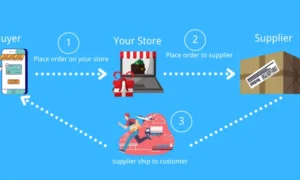Inflation has become a pressing issue for economies worldwide, with rising prices affecting everything from groceries to gasoline. As the cost of living continues to increase, consumers are feeling the financial strain, prompting a shift in how they spend and save money. For many, coupons have become a vital tool in navigating the financial pressures caused by inflation. The coupon industry has seen significant changes due to this economic environment, both in terms of consumer behavior and the strategies businesses use to remain competitive.
This article explores the various ways inflation is impacting the coupon industry, both positively and negatively, and why coupons are more important than ever in an era of rising prices.
Inflation Driving Consumer Demand for Coupons
When inflation hits, the first impact on households is a decrease in purchasing power. As prices rise, consumers find that their incomes don’t go as far as they used to, pushing them to seek out ways to make their money stretch. This has led to a surge in coupon usage, as people look for opportunities to save on everyday purchases.
Historically, periods of high inflation have coincided with increased coupon redemption rates. Today is no different, as many families are turning to coupon websites and apps to find deals on essential items. Food, personal care products, and household goods are among the most searched categories on coupon websites, as these are the areas where rising costs are felt most acutely.
Digital coupon platforms like Valuecom.com have seen notable increases in traffic as consumers become more proactive in searching for savings. The convenience of online coupon platforms allows users to quickly find discounts across multiple categories, which helps them manage their overall spending more efficiently. Whether it’s a percentage off groceries, free shipping on online purchases, or exclusive deals from favorite retailers, consumers are more motivated than ever to find and use coupons.
The Role of Coupons in Helping Businesses Combat Inflation
While inflation affects consumers’ ability to spend, it also places significant pressure on businesses. Higher production costs, supply chain disruptions, and increased wages all contribute to the financial burden that companies face in inflationary times. To mitigate these challenges, businesses must find ways to balance raising prices and keeping their customers loyal.
Coupons have proven to be an effective tool for businesses to navigate this balancing act. By offering discounts through coupons, companies can soften the blow of price hikes while maintaining a competitive edge. Rather than alienating cost-conscious consumers with sudden price increases, businesses can use coupons to provide value while offsetting some of their higher operating expenses.
Coupon websites like Promocodie.com play a critical role in connecting businesses with consumers. These platforms act as intermediaries, helping brands offer targeted promotions to customers who are actively seeking out discounts. This strategy enables businesses to retain their customer base during inflationary periods while still covering the rising costs associated with producing goods and services.
In many cases, brands may opt for more strategic couponing rather than blanket discounts. For example, offering a percentage off high-margin items or running limited-time offers can help balance the need for savings with the company’s need to protect its profit margins.
The Evolution of Couponing Strategies During Inflation
Inflation not only changes consumer behavior but also requires companies to adapt their promotional strategies. Businesses may need to reassess how they offer discounts and promotions to ensure that they are both effective in driving sales and sustainable for the company’s bottom line.
For example, businesses may focus more on offering coupons that promote bulk purchases or bundled deals. This can encourage consumers to spend more in one transaction while still feeling like they are getting a good deal. Additionally, brands might offer tiered discounts, where larger savings are unlocked based on the amount spent. These types of promotions allow businesses to maintain profitability by driving higher overall sales volumes.
Another evolving trend is the use of AI-driven personalized marketing. Companies are increasingly turning to artificial intelligence to help tailor their coupon offerings based on individual consumer behavior. By analyzing past purchases, browsing habits, and demographic data, AI can generate personalized coupon recommendations that are more likely to appeal to specific customers. This makes couponing more efficient for businesses, as they can target the right consumers with the right offers at the right time. Platforms like Promocodie.com are starting to integrate these AI capabilities to deliver smarter savings for both consumers and businesses alike.
The Growth of Digital Couponing
As inflation continues to rise, so does the demand for convenient and accessible couponing methods. The shift to digital couponing has accelerated in recent years, driven not only by technological advancements but also by the need for more efficient savings tools in a challenging economic climate.
Digital coupons have several advantages over traditional paper coupons. They are easier to distribute, more environmentally friendly, and can be tailored to specific user preferences. Moreover, digital coupon platforms provide businesses with valuable data on consumer behavior, allowing them to refine their promotional strategies further.
Conclusion
The impact of inflation on the coupon industry has been profound, leading to increased consumer demand for savings and prompting businesses to rethink how they offer discounts. Coupons have become an essential tool for navigating the challenges of rising prices, both for shoppers trying to manage their budgets and for businesses looking to maintain customer loyalty in a difficult economic environment.
As inflation continues to shape the landscape of commerce, the coupon industry is likely to evolve further. The shift toward digital couponing, personalized marketing, and more strategic discounting methods is just the beginning of what could be a long-term transformation in how consumers and businesses interact. In the face of rising costs, the role of coupons will remain central to helping both sides of the equation manage the financial challenges posed by inflation.


































